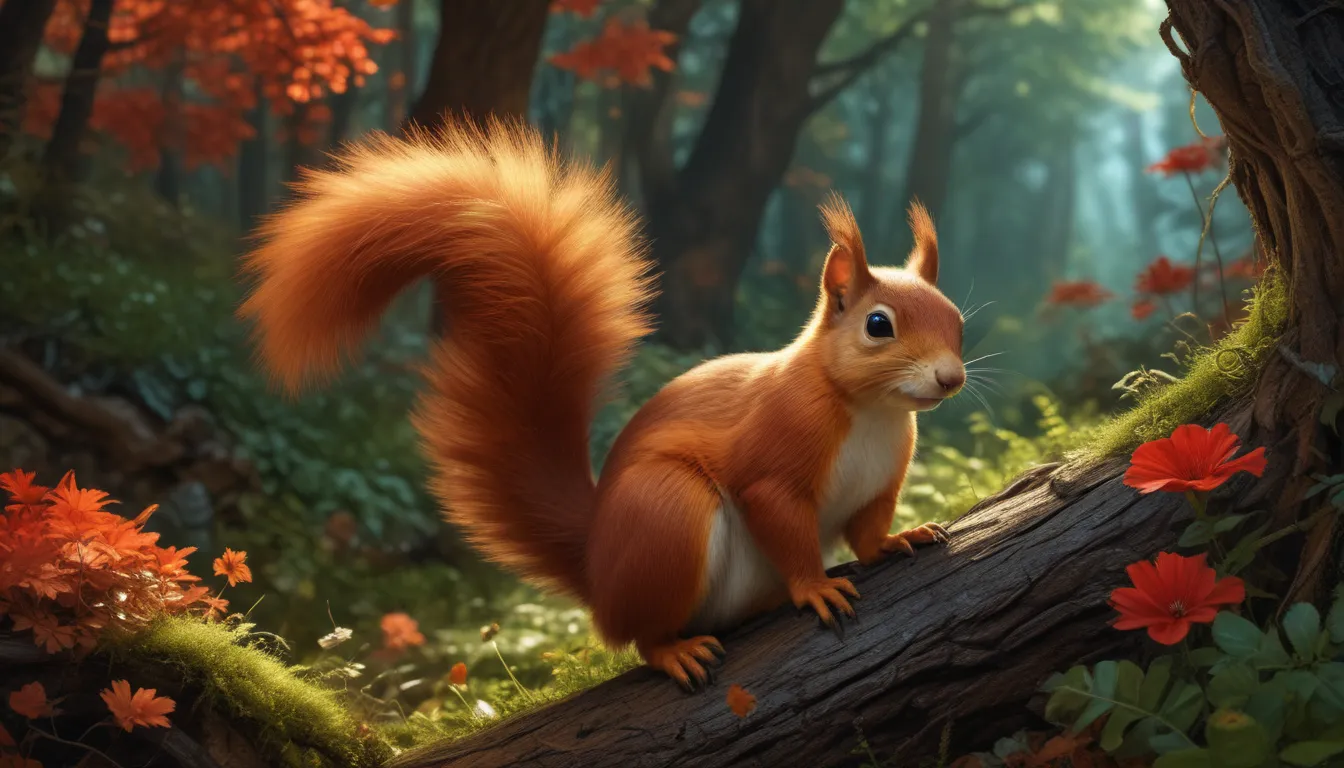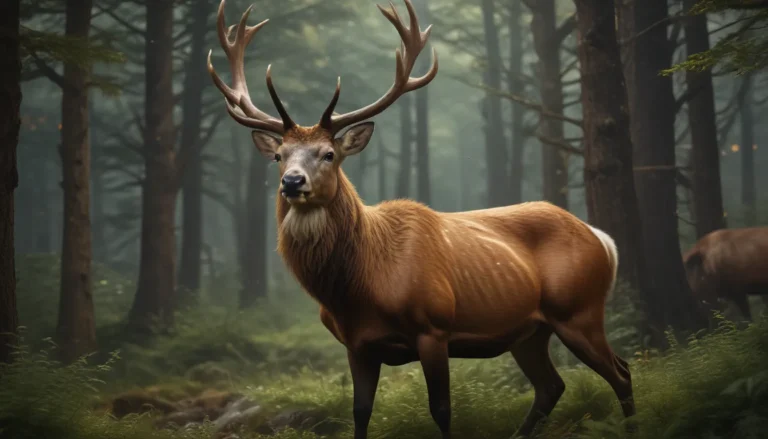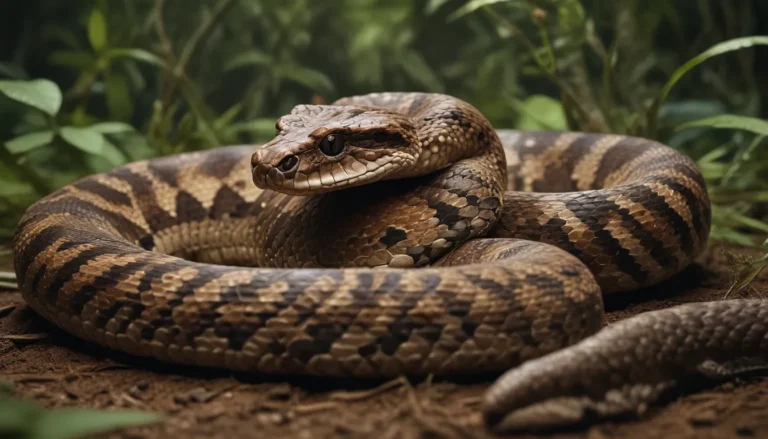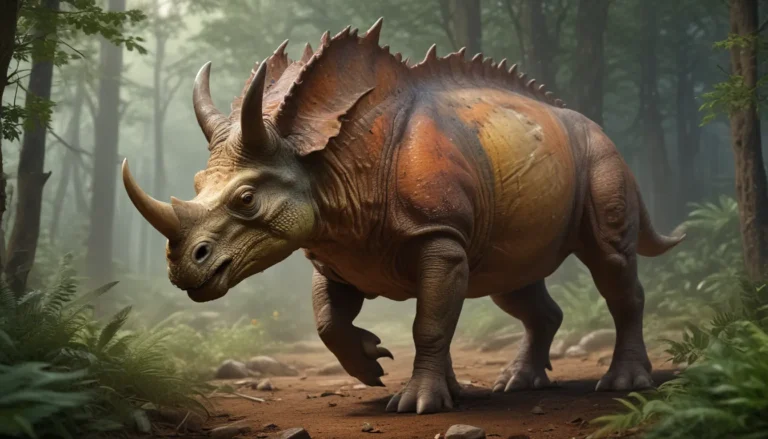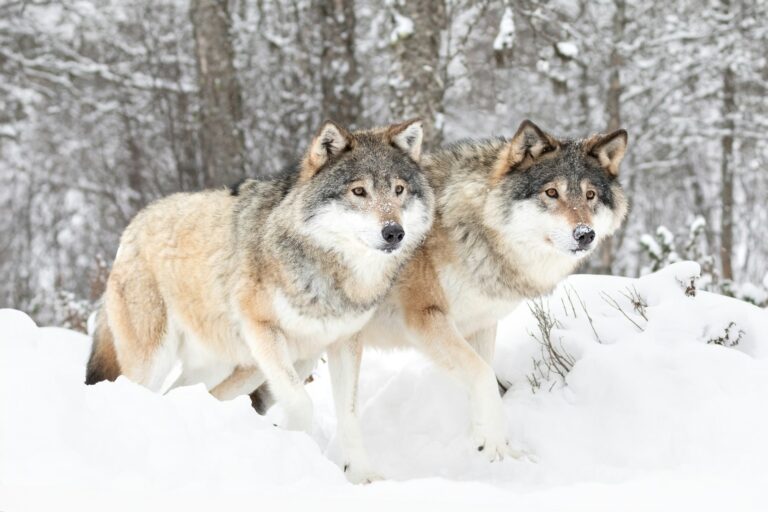The pictures we use in our articles might not show exactly what the words say. We choose these pictures to make you interested in reading more. The pictures work together with the words but don’t take their place. The words still tell you the important facts.
Welcome to the enchanting world of the red squirrel, a charming and iconic animal known for its vibrant red fur, fluffy tail, and adorable antics. These small creatures have captured the hearts of many nature enthusiasts and conservationists worldwide. In this article, we will delve into 17 fascinating facts about the red squirrel, exploring their habitat, behavior, diet, and conservation status. From their remarkable acrobatic skills to their vital role in forest ecosystems, red squirrels are truly remarkable creatures that deserve our attention and protection. So, let's embark on a journey to uncover the intriguing aspects of the lives of these delightful creatures.
The Native Habitat of Red Squirrels
Red squirrels, also known as Eurasian red squirrels, are indigenous to the forests of Europe and parts of Asia. Countries such as the United Kingdom, Germany, Russia, and China are home to these adorable creatures, where they thrive in diverse habitats.
The Vibrant Coloring of Red Squirrels
One of the most striking features of red squirrels is their vibrant reddish-brown fur, which gives them their name. While their coloring can vary, with some individuals having darker or lighter shades of red, their striking appearance is a key characteristic of these charming creatures.
The Acrobatic Skills of Red Squirrels
Red squirrels are known for their impressive acrobatic skills. With strong hind legs and sharp claws, these agile creatures can effortlessly navigate tree branches and perform daring leaps from tree to tree, showcasing their agility and grace.
The Hoarding Instinct of Red Squirrels
Red squirrels have a natural instinct for hoarding food. During the fall, they diligently collect and store nuts and seeds to sustain them through the winter months. Their excellent memory allows them to locate their hidden stashes, ensuring their survival during harsh winter conditions.
The Vocal Communication of Red Squirrels
These charismatic rodents utilize a wide range of vocalizations to communicate with each other. From high-pitched calls to warning signals in the presence of predators, their diverse vocal repertoire plays a crucial role in their survival and social interactions.
The Diverse Diet of Red Squirrels
Red squirrels have a varied diet that includes nuts, seeds, berries, fungi, insects, and even bird eggs. Their sharp front incisors enable them to crack open nuts with ease, allowing them to access the nutritious kernels inside and maintain a balanced diet.
The Elaborate Nests of Red Squirrels
Red squirrels construct intricately woven nests called dreys, made of twigs, leaves, moss, and other materials. Positioned high up in trees, these nests provide protection against predators and harsh weather conditions, showcasing the resourcefulness of these remarkable creatures.
The Territorial Behavior of Red Squirrels
Red squirrels are territorial animals that fiercely defend their territories against intruders. Through scent markings and aggressive behaviors, they mark their boundaries and protect their space, showcasing their strong sense of ownership and survival instincts.
The Climbing Abilities of Red Squirrels
With sharp claws and strong limbs, red squirrels possess remarkable climbing abilities. They can scale tall trees and navigate branches with precision, enabling them to access food sources and evade potential threats, showcasing their adaptability and agility in their natural environment.
The Swimming Skills of Red Squirrels
Despite their small size, red squirrels are capable swimmers when necessary. Using their bushy tails as a rudder for balance and propulsion, they can paddle across bodies of water, demonstrating their versatility and resourcefulness in challenging situations.
The Lifespan of Red Squirrels
Red squirrels have relatively long lifespans compared to other small mammals. In the wild, they can live up to six years, while those in captivity can reach ages of up to ten years or more, highlighting their resilience and adaptability in different environments.
The Role of Red Squirrels in Forest Regeneration
Through hoarding and forgetting nuts and seeds, red squirrels inadvertently aid in forest regeneration. Unclaimed food caches sprout into new plants, contributing to the replenishment and diversification of forest ecosystems, showcasing their integral role in maintaining healthy forests.
The Conservation Status of Red Squirrels
Due to declining populations, red squirrels are protected in certain regions to ensure their survival. Conservation efforts, such as wildlife reserves and invasive species control, aim to safeguard their populations and promote their habitats, highlighting the importance of preserving these charming animals for future generations.
The Threats Faced by Red Squirrels
Red squirrels face threats from invasive species, particularly gray squirrels, which outcompete them for resources and carry a lethal virus that impacts their survival. Habitat loss and competition pose significant challenges to the long-term survival of red squirrels, underscoring the importance of conservation efforts in protecting these beloved creatures.
Conclusion: Preserving the Enigmatic Red Squirrels
In conclusion, red squirrels are fascinating creatures with unique characteristics and behaviors that captivate nature enthusiasts worldwide. From their vibrant fur to their acrobatic skills, these little mammals play a vital role in maintaining forest ecosystems and deserve our attention and protection. By learning more about red squirrels, spreading awareness about their importance, and actively supporting conservation efforts, we can contribute to the preservation of their populations and the biodiversity of our planet. Let us appreciate the charm and significance of red squirrels as we strive to ensure a thriving planet for all species to coexist harmoniously.
FAQs: Exploring More about Red Squirrels
Q: What is the average lifespan of a red squirrel?
A: Red squirrels typically live for about 3 to 6 years in the wild.
Q: Do red squirrels hibernate during the winter?
A: While red squirrels do not hibernate, they have adapted to survive harsh winter conditions by building nests called dreys and relying on cached food supplies.
Q: What do red squirrels eat?
A: Red squirrels primarily feed on a diet of nuts, seeds, fruits, and fungi. They are particularly fond of pine cones.
Q: Are red squirrels solitary animals?
A: Red squirrels are mostly solitary animals, except during the mating season. They are territorial and defend their territories fiercely.
Q: How high can red squirrels jump?
A: Red squirrels are impressive jumpers and can leap distances of up to 20 feet horizontally.
Q: Do red squirrels have any predators?
A: Red squirrels are preyed upon by a variety of predators, including birds of prey, martens, weasels, and domestic cats.
Exploring the world of red squirrels offers a glimpse into the intricate connections between species and their habitats, emphasizing the importance of biodiversity and conservation efforts. By protecting red squirrels and their habitats, we contribute to the preservation of nature's delicate balance and ensure a thriving planet for generations to come. Let us appreciate and safeguard these charming creatures as we celebrate the wonders of wildlife and the richness of our natural world.
